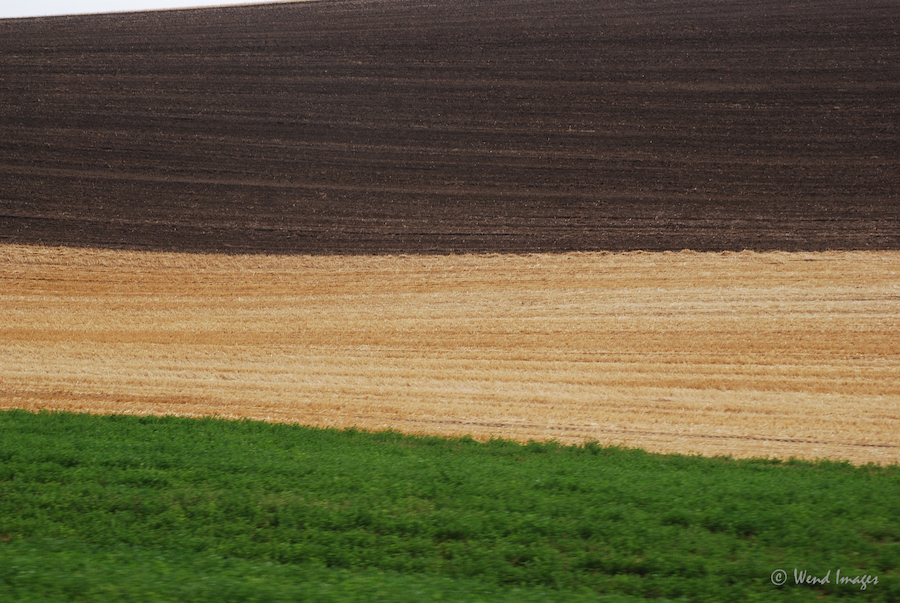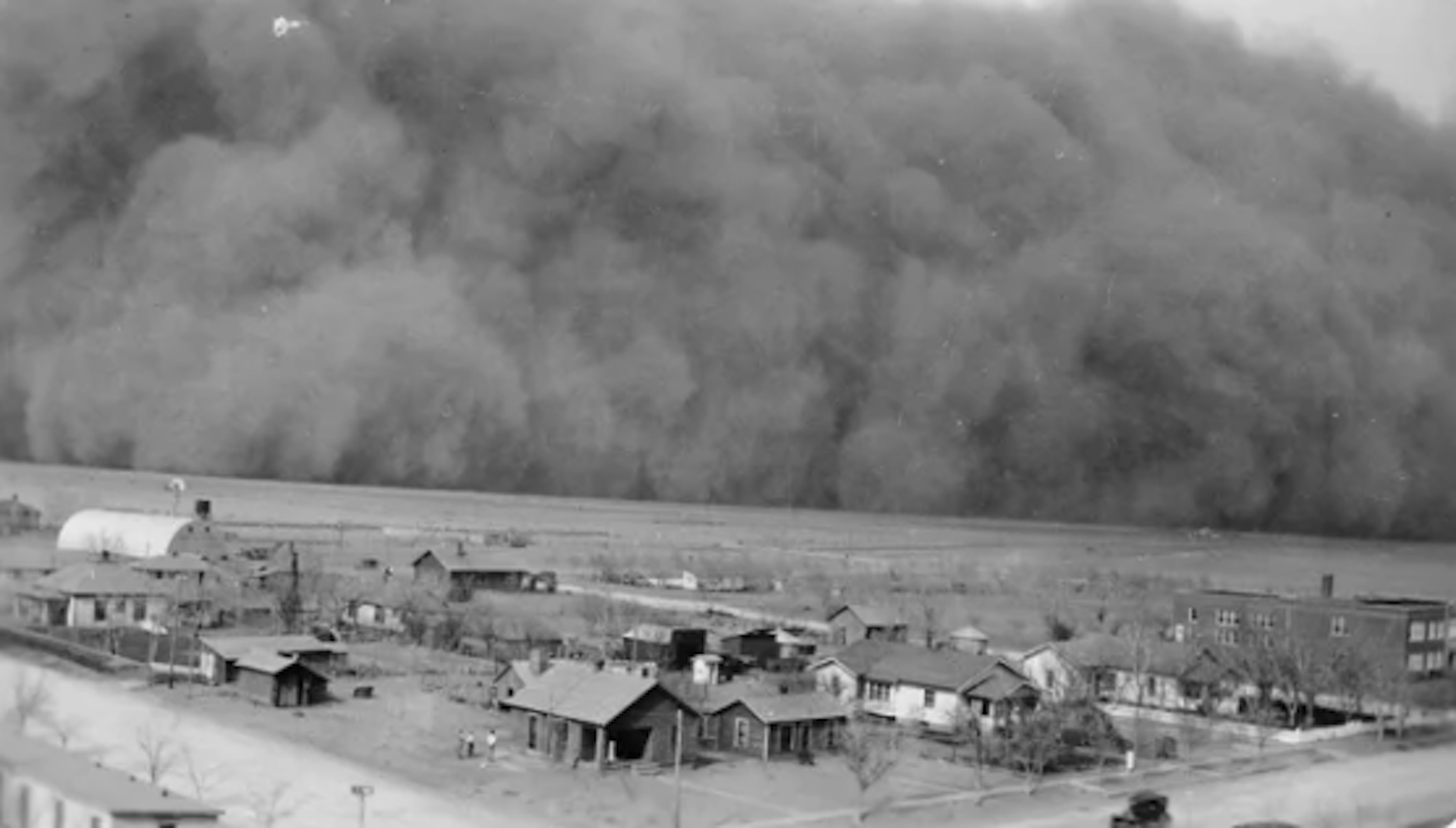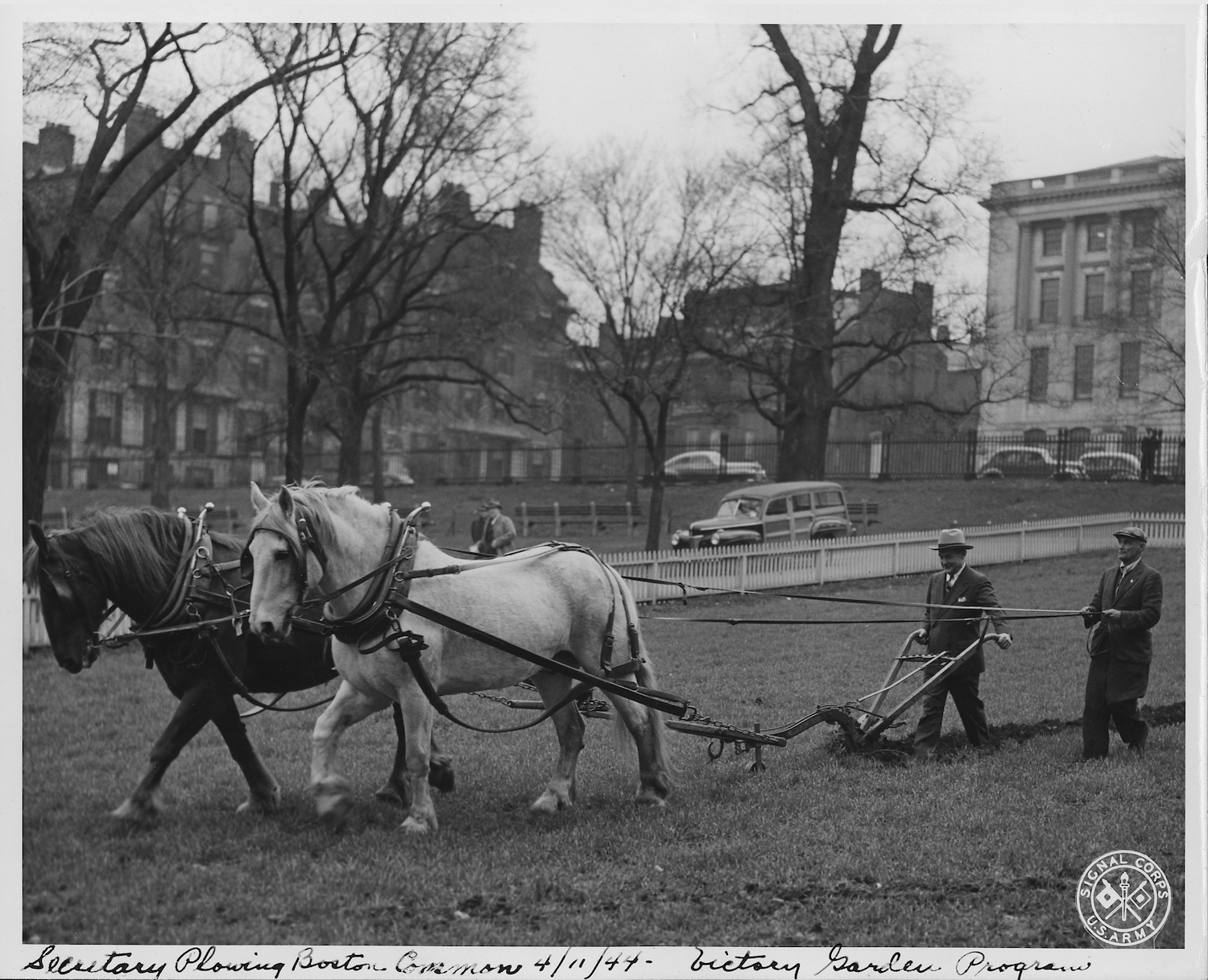
Barbara Lloyd McMichael’s monthly column examines the impact of the Biden Administration’s Building Back Better initiative.
“Amber waves of grain” and “fruited plains” – the very first lines of “America the Beautiful” celebrate the United States’ agricultural heritage. When Katherine Lee Bates wrote those lyrics in 1893, the nation was on the cusp of the industrial revolution, but the majority of Americans still had rural roots. Contrast that with today, when only about 1 percent of the American population lives or works on a farm. And yet, the U.S. is still one of the world’s largest producers of food, and it is the top food-exporting nation. The U.S. Department of Agriculture has played an important role in that success.
When the United States first became a nation, farming was the primary occupation for most of its inhabitants. But the federal government didn’t get deeply involved in the agricultural sector until the Civil War era. In the United States’ 1860 census, farmers had accounted for nearly 60 percent of the nation’s work force, but the South represented a significant chunk of the United States’ agricultural output, and after those states seceded from the Union, President Abraham Lincoln and the northern legislators understood that they needed to bolster the agricultural sector that remained.
In May of 1862, Lincoln signed a bill that established a Department of Agriculture. Prior to this, the federal government’s support for farmers primarily lay within the U.S. Patent Office, which had a division that collected and distributed seeds and plants. But the establishment of the U.S. Department of Agriculture meant the infusion of funding and expertise into a full-scale research and development agency.
Also that May, Congress passed the Homestead Act to accelerate settlement of the West. The Act laid out conditions that allowed Americans to acquire 160-acre parcels of land in the West at minimum cost. If a settler built a cabin on the parcel and established a farm, he or she could prove up their claim of ownership after five years – provided they’d never fought against the U.S. government.
A few months later, Lincoln signed the Land Grant College Act, which provided funding for every state to establish a college that would specialize in “A&M” curriculum – agriculture and mechanics.
Lincoln called the Department of Agriculture “the people’s department,” because its work affected everybody. Despite the importance of its mission, the department was not actually elevated to Cabinet status until 1889.
By then, the expansion of railroads across the United States had made the raising of livestock and the meat packing industry big business. President Chester Arthur signed legislation that charged the USDA with safeguarding against the use of diseased animals for food. But it took another two decades, and Upton Sinclair’s novel The Jungle, to raise awareness about the filthy conditions in meat-packing plants. The Federal Meat Inspection Act and the Pure Food and Drug Act finally became law in 1906.
Different bureaus within the USDA enforced these laws and other food and cosmetics safety legislation until 1940, when a government reorganization transferred those responsibilities to the Federal Security Agency, which eventually became the Food and Drug Administration and was reassigned to what today is known as the Department of Health and Human Services.
Since then, many additional laws have been passed to ensure food safety – some of these continue to be enforced by the HHS’s FDA, and others by the USDA’s Food and Inspection Service.
 The 20th Century saw many advances in the agricultural sector: varietal developments, farming techniques and technologies, fertilizers and insecticides, and food processing and shipment procedures. Not only was the USDA instrumental in developing and promoting many of these shifts, it also acquired a raft of new responsibilities.
The 20th Century saw many advances in the agricultural sector: varietal developments, farming techniques and technologies, fertilizers and insecticides, and food processing and shipment procedures. Not only was the USDA instrumental in developing and promoting many of these shifts, it also acquired a raft of new responsibilities.
Today the Department oversees the work of 29 agencies that support agricultural research, nutritional services, food security, land and water conservation, forest health and productivity, rural housing and utilities, cooperative extension services, and more.
Despite all of these supports, farmers have always been bedeviled by the unpredictability of the weather. During the late 1800s, lawmakers appeared to be swayed by a Nebraska land speculator’s boast that “Rain follows the plow.” Indeed, in those early years of pioneer settlement on the plains, there were some rainy years that succored bumper crops. But that ultimately resulted in overproduction, which kept prices low even as costs went up for the farmers due to freight rates, the pricing of seed and machinery, and interest on loans.
Then, at the turn of the century, the rainy years abated, and farmers faced a new set of dry-weather challenges. Congress moved to help the folks who were trying to eke out a living on arid land by offering more of it, doubling homesteaders’ acreage allotments to 320 acres in some places, and quadrupling the acreage elsewhere.
Keep in mind that farmers in the Great Plains states didn’t have the benefit of generations of farming in that environment. They were bound to make mistakes. Many farmers deep plowed the prairie topsoil and used mechanized equipment to expand their operations. Their intensive farming practices worked in the short term – and during World War I, there was great demand for crops. But after that war, demand and prices dropped again, and then when drought hit the Great Plains in earnest in the 1930s, the overworked top soil on the prairies blew away in dust clouds thick enough to turn the sky black in midday.
 The Dust Bowl catastrophe landed in the lap of Franklin Delano Roosevelt’s Agriculture Secretary, Henry A. Wallace. Wallace had been a successful hybrid corn farmer in Iowa, as well as the editor of an agricultural periodical. He was also the son of Henry Cantwell Wallace, who had served as Secretary of Agriculture under President Warren G. Harding. Both father and son believed in using government policy to control agricultural prices and to sell surplus crops to foreign markets. The senior Cantwell’s advice had gone unheeded during his term of service, but the New Deal era gave Henry Wallace a chance to pursue some of those strategies. He lobbied for the Agricultural Adjustment Act, which raised prices for commodities by paying landowners subsidies to keep some of their land fallow. When this policy was struck down by the Supreme Court, Wallace redesigned the program in response to all of the Court’s objections and successfully persuaded Congress to pass a new, improved version, called the Soil Conservation and Domestic Allotment Act of 1936, which taught farmers how to avoid damaging their land, and also implemented a program to plant trees and native plants to counteract the erosive effects of the Dust Bowl.
The Dust Bowl catastrophe landed in the lap of Franklin Delano Roosevelt’s Agriculture Secretary, Henry A. Wallace. Wallace had been a successful hybrid corn farmer in Iowa, as well as the editor of an agricultural periodical. He was also the son of Henry Cantwell Wallace, who had served as Secretary of Agriculture under President Warren G. Harding. Both father and son believed in using government policy to control agricultural prices and to sell surplus crops to foreign markets. The senior Cantwell’s advice had gone unheeded during his term of service, but the New Deal era gave Henry Wallace a chance to pursue some of those strategies. He lobbied for the Agricultural Adjustment Act, which raised prices for commodities by paying landowners subsidies to keep some of their land fallow. When this policy was struck down by the Supreme Court, Wallace redesigned the program in response to all of the Court’s objections and successfully persuaded Congress to pass a new, improved version, called the Soil Conservation and Domestic Allotment Act of 1936, which taught farmers how to avoid damaging their land, and also implemented a program to plant trees and native plants to counteract the erosive effects of the Dust Bowl.
 In the 1940 presidential election, Wallace was tapped as FDR’s running mate, so Undersecretary of Agriculture Claude R. Wickard was promoted to the top position at the USDA. When the United States was drawn into World War II the following year, Wickard urged farmers to show their patriotism by increasing their production. With the motto “Food Will Win the War and Write the Peace,” he also was an outspoken supporter of the National Victory Garden Program.
In the 1940 presidential election, Wallace was tapped as FDR’s running mate, so Undersecretary of Agriculture Claude R. Wickard was promoted to the top position at the USDA. When the United States was drawn into World War II the following year, Wickard urged farmers to show their patriotism by increasing their production. With the motto “Food Will Win the War and Write the Peace,” he also was an outspoken supporter of the National Victory Garden Program.
To this day, the USDA continues to promote food and nutrition campaigns to the general public. These include the “My Plate” recipes and resources, national school breakfast and school lunch programs, summer food service programs, supplemental nutrition programs for women, infants and children (WIC), programs that provide food assistance in partnership with food banks and other food distribution programs, and the Supplemental Nutrition Assistance Program (SNAP) – which used to be known as food stamps.
There had been a relatively short-lived food stamp program during the Great Depression, and the concept was revived again as a pilot project when John F. Kennedy was President. His successor, Lyndon B. Johnson, made the food stamp program permanent as part of his Great Society program.
But not all presidential administrations were keen on the program.
In the 1980s, Ronald Reagan suggested that “welfare queens,” which some regarded as a coded racist term for Black single mothers, were taking unfair advantage of food stamps. Although Reagan succeeded in reducing the food stamp program during his time in office, his policies received pushback from anti-hunger advocates such as the Food Research & Action Center, which published analyses pointing out the disparity between black and white infant mortality rates across the nation, and the connection between infant deaths and poor nutrition among low-income mothers. FRAC also shone a spotlight on the proposed relaxation of USDA guidelines for school lunches so that condiments such as pickle relish and ketchup could be counted as vegetables.
Welfare reform remained a hot topic, however, and Reagan’s successor in the Oval Office, Bill Clinton, also worked to shrink the number of folks who could qualify for food benefits and limited how much assistance a recipient might expect.
More recently, President Donald Trump was outspoken in his desire to slash the size of the federal government. He had a willing accomplice in Sonny Perdue, the Georgia politician he chose as his Secretary of Agriculture.
One of Perdue’s boss-pleasing moves was to relocate two USDA agencies, the National Institute of Food and Agriculture and the Economic Research Service, outside of the Beltway. Way, way, outside – to Kansas City. USDA researchers – these were not political appointees but apolitical staff members who served from one administration to the next – had been trying to share their findings on the impact of climate change on crops and food security, but the Trump White House wasn’t just disinterested – it was resistant. It wanted those findings suppressed.
The relocation to the Midwest was too disruptive for many of the staff members – two-thirds of the reassigned employees quit. That certainly contributed to the Trump administration’s goal for smaller government – it also effectively clamped down on some impactful federal research.
With that government reduction success under his belt, Perdue developed some proposals that would limit eligibility for SNAP. But Perdue’s ideas were so draconian that the negative reaction from Congress was bipartisan. When Perdue said he would be going ahead with those steps anyway, the USDA was flooded with over 100,000 comments from the public, the majority expressing opposition to Perdue’s agenda.
Perdue didn’t care. In March 2020, even as the nation’s economy was abruptly shutting down due to the COVID-19 pandemic that was sweeping the globe, the USDA was poised to institute the Secretary’s first rule, which would have denied food assistance to able-bodied adults without dependents if they weren’t working at least 20 hours per week. An injunction issued by a federal court judge put a stop to that. The judge called the rule “arbitrary and capricious,” especially since the American public was being told to stay home in the midst of a deadly pandemic.
But Perdue’s tone-deaf leadership at the USDA persisted through a host of additional pandemic-related issues. The urgent spike in requests from food banks for USDA assistance, for example, or the deadly COVID-19 clusters at meatpacking plants were handled clumsily, if at all.
--------
A year ago, the nation and the world were watching to see if Joe Biden could defeat Donald Trump in the 2020 campaign for the presidency. He did.
Biden had promised to Build Back Better, but in his first year in office, he has been faced not only with having to rebuild significantly diminished federal agencies, but also with reconnecting an entire society that has been politically fragmented and seriously de-moralized.
Perhaps hoping to install someone at the USDA who could hit the ground running, Biden nominated Tom Vilsack as Ag secretary. Vilsack had served in that post for eight years during Barack Obama’s presidency. He’d worked with Vice President Joe Biden then, as well as with First Lady Michelle Obama, who made nutrition one of her major initiatives.
When Vilsack’s service as Agriculture Secretary ended with the conclusion of Obama’s presidency, he proudly counted the creation of 500,000 jobs in rural America as one of his major accomplishments, along with the dramatic growth of biobased products (to replace petroleum). He pointed to the agricultural sector’s flourishing export numbers during the Obama administration, thanks to the removal of trade barriers and the expansion of existing markets and the opening of new ones. And he talked about the USDA’s commitment to conservation, partnering with half a million farmers and ranchers annually to implement conservation measures, reduce harmful runoff from farm fields, and reduce net greenhouse gas emissions.
But Vilsack had his critics then and now, and Biden’s appointment of the veteran administrator to reprise his role at the USDA came under fire from different quarters.
The Center for Food Safety brought up the inadvertent but harmful environmental side effects that arose during Vilsack’s previous tenure, after the USDA approved several genetically modified crops. The Center also voiced concern about Vilsack’s less-than-assiduous oversight of meat inspection and factory farms.
The National Black Farmers Association raised another issue. While the number of farmers nationwide has shrunk overall, the statistics for declining Black farm ownership are exponentially worse. Over the past couple of decades, the NBFA has successfully taken the USDA to court more than once and demonstrated that systemic racism within the Department has had a negative impact on Black farmers. Much of this can be traced to gatekeepers at the USDA’s local field offices, but the NBFA wants to make sure that the guy at the top of the Department understands his responsibility to dismantle that racism.
Biden has made racial equity a cornerstone of his presidency, and so far, Secretary Vilsack (the 2.0 version) seems to be advancing that mission. Shortly after assuming his post with the USDA, he announced the appointment of Dr. Dewayne Goldmon as his Senior Advisor for Racial Equity, and also announced the launch of a first-ever USDA Racial Justice and Equity Working Group that will assist the USDA in activating Biden’s Executive Order on Advancing Racial Equity and Support for Underserved Communities. This summer Vilsack announced his promotion of Randy Moore, Regional Forester in the Pacific Southwest Region, to the role of Chief of the Forest Service. Moore is the first African American ever named to that position. And this fall, the USDA has allocated tens of millions of dollars to ensure more educational opportunities in agriculture at Hispanic-serving and Historically Black Colleges and Universities. The USDA also has committed $25 million in grants to ensure broader participation in USDA programs for historically underserved farmers and ranchers.
As for the concerns raised by environmental watchdog groups, the Biden administration has already demonstrated a 180-degree reversal from the previous administration’s climate change denial stance. At the USDA, that will be manifested by addressing climate change resiliency and environmental sustainability initiatives with a toolkit that includes water resource management, organic farming research, forest management practices, climate-driven wildfire science and more.
There’s a laundry list of other urgent needs – ensuring nutritional security for children year-round, installing broadband in rural communities and investing in small-town businesses, working with tribes to restore traditional food sources, preparing for future pandemics and supply chain disruptions.
But the extent of what the USDA can undertake and accomplish won’t be fully known until Congress gets around to passing the infrastructure bills.
#
Barbara Lloyd McMichael is a freelance writer living in the Pacific Northwest.
Research Links:
Food Research and Action Center - https://frac.org/about/our-history
“an injunction” - https://www.npr.org/sections/thesalt/2020/03/14/815748914/judge-blocks-rule-that-would-have-kicked-700-000-people-off-snap
“arbitrary and capricious” - https://ecf.dcd.uscourts.gov/cgi-bin/show_public_doc?2020cv0119-51
Vilsack “major accomplishments” - https://www.agriculture.com/news/business/secretary-of-ag-vilsack-shares-his-top-five-accomplishments
Center for Food Safety – https://www.centerforfoodsafety.org/
National Black Farmers Association - https://www.blackfarmers.org/









